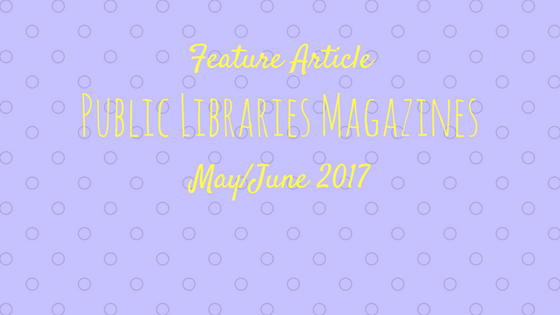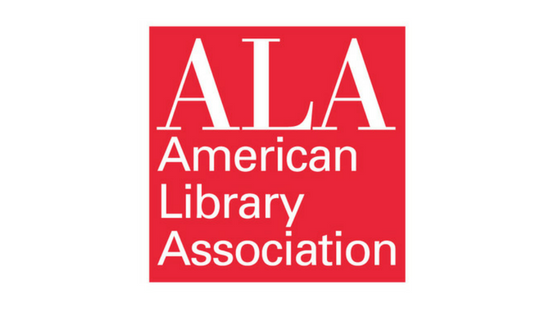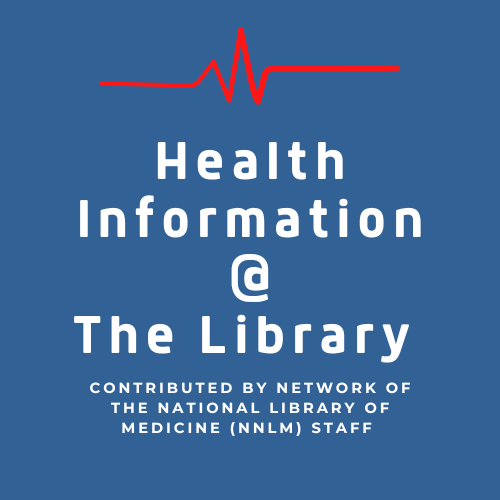Antifragile Management and the End of the Annual Performance Review

MARY JO FINCH is Director and AUTUMN SOLOMON is Associate Director of Westbank Community Library District in Austin (TX). Contact Mary Jo at maryjo@westbanklibrary.com. Contact Autumn at autumn@westbanklibrary.com. Mary Jo is currently reading The Sweet Spot: How to Find Your Groove at Home and Work by Christine Carter. Autumn is currently reading Ungifted: Intelligence Redefined by Scott Barry Kaufman.
In late 2012, Nassim Nicholas Taleb published Antifragile: Things That Gain from Disorder, the fourth book in his Incerto series, which started with Fooled by Randomness, The Black Swan, and The Bed of Procrustes. Whereas stress breaks fragile systems and does not affect resilient systems at all, Taleb explained, antifragile systems grow stronger when exposed to moderately stressful events. Antifragile systems have the best chance of surviving a “Black Swan,” that unpredictable big event, because they learn how to adapt and evolve through regular exposure to stressors.1
This idea instantly captivated our administrative team at Westbank Community Library District in Austin (TX). We were new to our roles, and while we were reasonably confident about how a library operates, we had nagging worries about how to protect the library, to make sure it’s still here and thriving a year from now and ten years from now and well beyond our own retirements.
We began pondering how a library could become more antifragile. How could we become the sort of library that could survive a tax cut, a public challenge, a local disaster, or some other unforeseen crisis? How could we become the sort of library that stays relevant to the ever-changing needs of the community? Many staff conversations later, we had the beginnings of a still-growing list of antifragile work culture elements. A new way of handling feedback would be central to the overall culture shift to come.
Elements of an Antifragile Work Culture
We began our examination of the concept of antifragility by looking at nature’s exquisite example, the human body. The body’s muscles and bones grow stronger with exercise, its immune system grows stronger through exposure to germs, its psyche grows stronger one small heartbreak at a time. It has rigid parts and flexible parts. Its biological functions are orchestrated across systems through the sophisticated messaging of hormones and nerves. Its spirit is sustained by relationships and meaningful work. It may not do well under chronic stress or extreme, debilitating stress, but periodic stressors with intermittent recovery time make a person stronger.
Translating this example to our organization, we reasoned that our antifragile library needed
- clear channels of communication;
- teamwork and cross-training;
- employees who are fully engaged, making decisions within their area of expertise;
- employees who know they are valued and are given opportunities to develop;
- supportive relationships both inside and outside our walls;
- regular practice for staff in navigating change and learning new things; and
- an attitude that embraces stressors as information and opportunities to learn, including change, complaints from the public, mistakes, and feedback.
Some of this was already well in place. Our smart, dedicated staff were already working in teams, were already serving as backup for each other, and already had a warm, supportive relationship with the community. They have always had exemplary engagement with their work. We also have an amazing roster of volunteers from the community who work side-by-side with staff, providing 14,000 hours of labor each year and serving as a bridge to different sectors of the community.
Staff were generously prepared to indulge a newbie director and associate director down this path called Antifragile, whatever that meant and wherever it would lead. We began by using the concept of antifragility as a framework for decision making. When faced with a choice, which one makes us stronger? Which one keeps us flexible, which one builds relationships, which one is sustainable, which one is simplest?
Over time, staff members became more conversant in antifragile parlance. Together we learned that while antifragility tends to be simpler, it also tends to be messier, which requires us all to be more flexible. We learned to get comfortable with the unknown and with taking some risks. When we find ourselves making new rules to solve a problem, someone on staff will inevitably remind the rest of us that we are being fragile. We repeat mantras to each other like “It’s not a problem until it’s a problem” and “Mistakes are opportunities” and “This is a good problem to have.”
Creating an Antifragile Workplace
While we didn’t set out to shift our work culture—things were working pretty well when we arrived—the culture did begin to shift, one decision at a time. Our very first antifragile decision was to stop requiring members to have their library card with them to check out materials. This rule had long been a bane of the circulation team, who had to explain to members that even though we could find their account in the system in order to make them a new library card, we weren’t prepared to just checkout their materials to them without selling them a new $1 card or waiting till they returned to the library with their original card. There were multiple justifiable concerns behind this rule, but the rule itself was damaging to our relationship with our members. We took a risk and abandoned the rule. We made a lot of people happy.
This set the tone for decisions to come, many of which were broader in scope. We separated policies from procedures in our documentation and began simplifying them. We restructured our teams with a focus on public service and cross-training, and redesigned our organizational chart to de-emphasize hierarchy. We flattened our management structure as much as possible by encouraging managers to be “bottom-up” in their approach, supporting and guiding more than directing work. We listened to staff concerns and started making the small changes they wanted as the beginning of what would become a continuing evolutionary process. Our strategic plan, adopted at the end of 2013, had a new vision and change at its core.
Eventually, we revised job descriptions to focus on responsibilities rather than lists of tasks. We rewrote our employee manual to describe the kind of experience we are trying to create for our community and the kind of work culture needed to foster that experience. We demonstrated staff value with raised salaries, improved benefits, greater flexibility in staff scheduling, and some sharing of unused sick time during family health emergencies. We quadrupled our professional development budget. And we rede ned the word “fair” to include the idea that any of us, at times, may need something extra, and a fair system—we call it “family fair”—allows for variances in human experience.
Developing Staff to Be Antifragile: The Feedback Loop
For the library to be antifragile, all of us on staff need to be learners who are accountable for our responsibilities, empowered to make decisions, allowed to make mistakes, and challenged to try new things. For a staff unused to this level of autonomy, feedback is vital.
Most organizations unload the bulk of their feedback on the employee in the annual performance review, as we were doing back in 2012. Recent management literature testifies to the shortcomings of this process. In a 2013 survey of 13,000 employees worldwide, management research firm CEB Global found that 65 percent of employees don’t believe performance reviews are relevant to their jobs, 95 percent of managers aren’t satisfied with their organization’s review process, and 90 percent of HR professionals don’t believe their organization’s performance reviews provide accurate information.2 In an Adobe survey of 1,500 office workers, 22 percent of them admitted to crying following a review.3
About a third of U.S. companies have now moved away from the traditional annual performance review, because a process that is supposed to motivate good work is doing the opposite.4 Employees who are not conditioned to receive feedback have a hard time processing a year’s worth in one sitting. They find the feedback to be untimely, biased, top-down, and judgmental.5
Feedback is a stressor, whether delivered in little doses or big doses. But in an antifragile environment, we know that stressors are information and information makes us stronger. The key, we found, is finding a rhythm for it and putting the employee in control of it.
At our libraries, we have developed a feedback loop, which is a continuous cycling of feedback from employee to manager and manager to employee at regular one-on-one meetings and longer, triannual progress check-ins. The process has multiple antifragile goals:
- The employee develops skills of self-reflection, goal setting, decision making, and personal accountability.
- The employee retains a degree of autonomy over daily work.
- The employee is empowered by sharing control of the feedback process.
- The employee and manager develop a trusting relationship where it is safe to try new things, where challenges are addressed, and where mistakes and failures are lessons and opportunities.
- The manager is a partner in the employee’s work and professional development.
- The manager coaches the em- ployee in the direction laid out in the organization’s mission, the strategic plan, and team goals.
- Each employee’s unique role and talents are recognized.
- The meeting format is less important than the fact that they are held regularly, the employee is heard, feedback is shared, trust built, and goals established.
One-on-One Meetings
Most feedback in our libraries happens in the weekly or bi-weekly one-on-one meeting. The employee is encouraged to lead this meeting, reporting on progress from the week, any issues that have arisen, and priorities and plans for the coming week. The employee might ask for feedback on a particular project or raise new topics of concern or interest. The manager may ask questions, acknowledge accomplishments, offer constructive feedback or suggestions, assist with priorities, add new goals or tasks, or raise new topics of her own. The length and frequency of this meeting depends on the complexity of the employee’s job.
This conversation is where trust is developed. It’s where employees and managers learn to be work partners. Having a regular meeting time makes sure this meeting happens most weeks.
Progress Check-Ins
Progress check-ins at our libraries are longer meetings which follow a set of prescribed questions designed to promote a deeper conversation between the employee and the manager. These are two-way conversations with feedback owing both directions. Some of the questions will change from check-in to check-in, year to year. Held three times per year, check-ins focus on goal setting in January, job description review in May, and a year’s worth of accomplishments in September (we budget in October). These meetings typically take one to two hours.
Most managers choose to give the ten to twelve questions to their employees ahead of time to allow time for reflection. Sometimes employees like to bring notes to the meeting. As with the one-on-one meetings, the employee takes the lead in the conversation, setting their own goals, recognizing their own achievements, and contributing to plans for their growth. Questions are meant to be conversation starters, where both parties contribute.
Information garnered from check-ins is documented by the manager and shared with administration to assist in planning and budgeting. The employee receives a copy as well.
Reception by Staff
Prior to the development of the feedback loop, some managers were already meeting regularly one-on-one with their team members, so this was not a big change for them. Most employees have adapted well to the rhythm of these conversations, though trust and a workable agenda sequence can take months to build in a new employee-manager relationship.
Progress check-ins required a bit more adjustment for some employees in the shift away from the annual performance review. Employees answering open ended questions for the first time were concerned about how their answers might be used, and it took several rounds of progress check-ins for some employees to trust enough to begin opening up. We were pleased when an employee who very much disliked our former annual performance review pronounced the new check-ins as “not something I dread.”
Altruistic fields like librarianship attract idealists, and we have more than our share of perfectionists on staff, administration included. The antifragile approach is particularly challenging for us. We have to get comfortable with not knowing, with messiness, and with feedback that tells us when our well-intentioned decision was not so well received. In the employee-manager partnership, trust grows over time so that each of us has a place where we can express our perfectionist frustrations. I know my feelings get hurt sometimes when I try to do something helpful and it somehow falls at, and I am grateful for an associate director who will bear a few minutes of my whining, honor my intentions, and then refocus me on what we can learn here that will make us stronger.
We have conducted periodic work culture surveys to make sure we are on track, and over the years, the results have been mostly positive with occasional critical but helpful feedback. After several years of anonymous surveys, for the first time this year we asked for non-anonymous responses. Eighty-six percent of regular staff were willing to share their feedback with their name attached. This is antifragile.
Topics in our survey may change a little from year to year, but generally we are interested in how often (never, occasionally, sometimes, often, almost always) employees experience:
- management being available to hear their concerns;
- understanding what is expected of them in their jobs;
- management encouraging them to make decisions;
- their workload being manageable; • feeling appreciated at work;
- feeling supported by their team;
- management understanding their needs outside of work;
- being asked to contribute to annual goals;
- helping their teams make decisions;
- being given opportunities to learn new things; and being asked to give input on their job description.
We do, of course, still have Performance Improvement Plans and a grievance procedure for those rare occasions when feedback is especially difficult.
Management Training and Support: Learning to Give and Receive Feedback
Some of the U.S. companies that moved away from annual reviews in recent years have not been satis ed with the result, citing a reduction in employee performance and quality of managerial feedback.6 Replacing the annual review requires more than just plugging in a different set of forms. It requires training and support for managers.
Learning to give and receive feedback is difficult. Managers need practice in giving feedback, whether it’s positive feedback, coaching, or constructive feedback. They need practice in navigating conversations where an employee might disagree, push back, or not respond. They need to know when they should step out of a conversation and try again at another time. They need to learn not to take feedback from their employees personally. They need to be held to account by their own managers to embrace the process and grow into it. They need to be reminded that feedback is information, and knowing is better than not knowing.
I personally struggle with allowing others the space to arrive at their own decisions. When employees ask for an opinion, I will give it when sometimes I shouldn’t. Sometimes there really is an administrative, historical, or legal perspective that should be considered, but other times I just like my idea better. Again, I am grateful for an associate director who will gently suggest that it would be a learning experience for others if I would just stay quiet through a meeting! It’s a learning experience for me too.
Our six-person management team meets twice per month. It is a time to share what is going on in our teams and to prioritize work, to explore management readings, and to discuss management challenges. Much of the work on development of the feedback loop has come from our readings of Thanks for the Feedback, Reality-Based Leadership, and Fierce Conversations.
A Difference for the Community
While being antifragile has positive effects for staff, improved stewardship for the community is the primary goal. Beyond hopefully making us better able to survive the local library version of the Black Swan, being antifragile has shifted our interactions with the community to be supportive in new ways.
Our strategic plan, for example, calls for the library to be a platform for community sharing, a la R. David Lankes (Expect More). We have gone from 1,000 programs per year in 2012 to close to 1,400 programs in 2016. Forty-three percent of those programs were brought to us by members of the community who are teaching each other chess, Qi Gong, yoga, meditation, languages, writing, and crafts. They have brought us programs focusing on education, parenting, special needs, health, nance, and business.
We have opened our meeting space to potentially contentious community meetings over school bonds, proposed oak wilt treatments, and new open-carry laws, so that neighbors could talk to neighbors about important topics.
The strategic plan also called for a renovation of one of our two libraries, which we completed in 2015. We made our spaces more flexible to meet the needs of people who are working for hours at a time in the library, people who bring their children for playful discovery, people who want meeting space, and people who want quiet study space. We made seating more comfortable, we improved the lighting, acoustics, and Wi-Fi, and we added a coffee station, a filtered water bottle filler, and healthy snacks. Our vision was to create a sanctuary for a very busy community.
In 2017, we are training several librarians to be Harwood Institute focus group facilitators. Their role will be to talk to people about what kind of community they want to live in and to distill the responses into a summary we can share with other community groups, so that we might collectively build a better experience for everyone. It’s messy, open-ended, and antifragile.
Conclusion
By embracing moderate stressors like uncertainty, risk, change, and feedback, we grow stronger, as a library, as teams, and as individuals. We learn and we evolve. We become better able to face whatever the future holds. This is the promise of antifragility.
As a management concept, it calls for a culture shift that emphasizes flexibility, relationships, communication, teamwork, accountability, empowerment, learning, and trust. It changes the way we work together, and it changes the way we give feedback. The feedback loop, which allows the employee and manager to partner in pursuit of goals, recognizes that the strongest employees know where they stand, have a say in their work, feel valued, and believe their work has meaning. The community is the ultimate beneficiary.
References
- Nassim Nicholas Taleb, Antifragile: Things that Gain from Disorder (New York: Random House, 2012).
- Dori Meinert, “Is It Time to Put the Performance Review on a PIP?,” Society for Human Resource Management, Apr. 1, 2015, accessed Mar. 12, 2017.
- Rebecca Greenfield, “Performance Reviews Are Making Us Cry. We Might Not Like the Cure,” Bloomberg.com, Jan. 13, 2017, accessed Mar. 12, 2017.
- Meinert, “Is It Time to Put the Performance Review on a PIP?”
- Greenfield, “Performance Reviews Are Making Us Cry.”
- CEB HR, “The Real Impact of Removing Performance Ratings on Employee Performance,” May 12, 2016, accessed Mar.12, 2017.
Further Reading
Douglas Stone, Thanks for the Feedback: The Science and Art of Receiving Feedback Well (New York: Viking, 2014).
Susan Scott, Fierce Conversations: Achieving Success at Work & in Life, One Conversation at a Time (New York: Berkley Books, 2004).
Cy Wakeman, Reality-Based Leadership: Ditch the Drama, Restore Sanity to the Workplace, and Turn Excuses into Results (San Francisco: Jossey-Bass, 2010).
R. David Lankes, Expect More: Demanding Better Libraries for Today’s Complex World (CreateSpace Independent Publishing Platform, 2012).
Harwood: The Institute for Public Innovation, “Reports,” The Harwood Institute, 2016, accessed Mar. 12, 2017.
Table 1. Sample Check-In Questions
| January | May | September |
|
|
|







